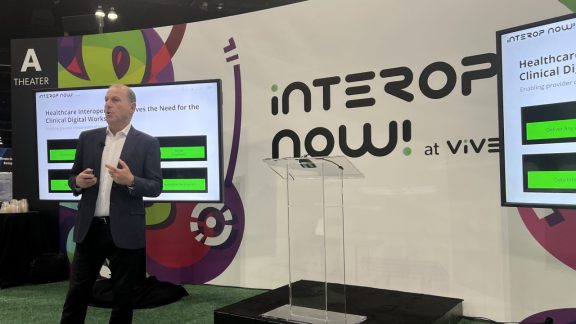by Mason Uyeda, Senior Director, Technical Marketing and Enablement, End-User Computing, VMware
For those who have watched the news and announcements this week from VMware Partner Exchange (PEX) in San Francisco, and especially those who have the opportunity to attend, I’m sure you would agree that it’s impressive to witness the unstoppable march of innovation. In particular, I’m speaking about end-user computing (EUC) and the numerous VMware partners that are announcing advances that will drive cost down, enhance user experience, and make implementation of EUC services even easier. This rich ecosystem of partners driving innovation speaks directly to the DNA of Silicon Valley and other hubs of technology, as well as to the opportunities that lie ahead for end-user computing.
Storage is an especially hot topic and a rapidly evolving space—software-defined storage and flash are the topics of discussion and have been instrumental in driving down the cost of infrastructure for Horizon View virtual desktops. I’m hearing discussions about the cost of network/compute/storage per virtual machine well under $200, not including licensing—with more IOPS capacity than most users need (how often do you really need a hundred IOPS per virtual machine?)—all while providing great end-user experience (below 5ms storage subsystem latency!).
So perhaps the question to ask is: “Can a virtual desktop be ‘better’ than a physical desktop in terms of the business, IT, and end-user experience?” You’ll need to read the announcements and decide for yourself…
So keep an eye on this space at PEX, and be sure to check out the following partners:
Nexenta
Innovation in action is how Nexenta might be described—already in 2014 Nexenta has won the BIG Innovation award, and promises to advance the world of software-defined storage. We have watched them for a while, and in 2014 they are re-invigorated and driving hard.
I’m often asked about where we see adoption of Horizon View—in what segments, both horizontal and vertical. Of course, we see adoption across all segments, especially those that are regulated. So, it may come as no surprise that healthcare is a very fast-growing segment. In fact, healthcare ranks as one of our top segments for professional services engagements. I mention healthcare in particular because as IT teams in healthcare seek to reduce cost, increase density, and improve performance, one partner they turn to is Nexenta. In fact, Nexenta is just publishing a customer reference: the Yale New Haven Hospital.
Here is what the customer had to say:
“We were faced with a significant challenge at Yale,” said Dave Franco, System Manager, Yale New Haven Hospital. “We needed a solution that was high-performance, scalable and cost effective. With an Integrated Solution including Nexenta VSA for VMware Horizon View, we were able to have a single architecture that met the needs of our users. We were very pleased with both the solution and the support we received from all the vendors in this project.”
Cool! We love a happy customer and look forward to more in healthcare with Nexenta. To top it off, Nexenta is a Silver Sponsor at PEX.
See:
Nimble Storage
We’ve worked with team Nimble on a few reference architectures, and we love what they did with SmartStack. What’s interesting is that they’ve read the signals in the market regarding infrastructure convergence—which essentially helps customers consume “increments” (and in the case of Nimble, smaller increments) of fit-for-purpose infrastructure, applied here to the Horizon View VDI workload. But that’s not all.
We are increasingly hearing customers talk about their experiments and experience with mixed workloads—combining VDI, management, database, etc., onto a single array or storage infrastructure. Up to this point when I’ve asked customers what they did to validate the approach (and keep that database from stepping on the VDI workload), it was common to hear, “Well, we thought we would just try it and see how it worked.” That’s motivation! Multi-workload aggregation into converged infrastructure, if done correctly, can really simplify datacenter operations. But there really hasn’t been a prescriptive approach.
Here is how Nimble describes the situation:
“Due to the differing characteristics and performance requirements of business-critical applications and virtual desktop infrastructure (VDI), enterprises with multi-workload environments are forced to create and manage infrastructures in silos. To alleviate this administrative nightmare, enterprises require a single architecture that adapts to both the performance and data protection requirements of each workload. The new SmartStack for Desktop and Server Virtualization delivers the high performance required for VDI and server virtualization, while at the same time delivering on the high levels of reliability and data protection through the snapshot and replication features built into Nimble’s Cache Accelerated Sequential Layout (CASL) architecture.”
We really appreciate the customer-centric focus, and look forward to seeing how the evolution of SmartStack can help break down those silos and increase efficiency.
See Nimble Storage with VMware.
Fusion-io
Fusion-io has long been at the front of innovation and acceleration—who can forget that wall of displays at VMworld a few years ago? Well, once again they are up to something interesting: “ioVDI” (which they describe as “Intelligent Performance for Desktops”) with technology called “Write Vectoring.” Ever heard of this?
Here is how Fusion-io describes Write Vectoring:
“A patent-pending technology that monitors and directs session-based desktop writes uniquely to server-side flash. By limiting shared storage interaction to the small number of writes that persist between login sessions, Write Vectoring preserves the use of VMware value-added features such as vMotion, HA, DRS, and SRM that require shared storage while substantially reducing SAN or NAS performance dependencies.”
Now, everyone familiar with the VDI workload understands the challenges of read/write ratios, but Fusion-io is actually doing something about it. Whether you would argue that the read/write ratio in VDI-land is 20/80, 25/75, or 30/70, Fusion-io “Write Vectoring” seems to help neutralize the issue. Essentially what the above description means is that files that don’t need to persist (page file I/O, temp files, etc.) are written to server-side flash, while files you do care about are directed to shared storage where they can be protected. The benefit is latency reduction, more efficient use of storage resource, and, yes, even cost reduction while providing a great user experience. Cool!
See Fusion-io and VDI.
SuperMicro and LSI, powered by EMC ScaleIO
Convergence: a hot topic (appliances) in a hot market (virtual desktop) is how I think of this. An interesting offering out on the PEX show floor is an appliance from SuperMicro…yes, the SuperMicro everyone knows for the rapid design cycles incorporating the latest customer requests and trends. In this case, SuperMicro has partnered with LSI (yep, with Nytro WarpDrives), and EMC (ScaleIO software) to create an appliance optimized for VMware Horizon View. What customers care about is predictable performance, predictable scale, and predictable cost. And I think SuperMicro may have achieved these goals with their offering. But they tell the story best—take a look!
See ScaleIO for VDI.
Well, that’s a wrap for now! Lot’s going on in end-user computing—hope to see you at Partner Exchange. Please stop by the VMware booth and say hello, and be sure to stop by and visit our EUC partners!
For a wrap-up of this week’s EUC-related news at PEX, read the blog post by Sumit Dhawan, VP and GM of Desktop Products for EUC, on the VMware company blog. You can also read more about the announcements made this week specifically around DaaS and secure access control for VDI on the VMware EUC product blog.
To stay on top of future announcements about DaaS and other EUC products, follow us on Twitter or Facebook.







